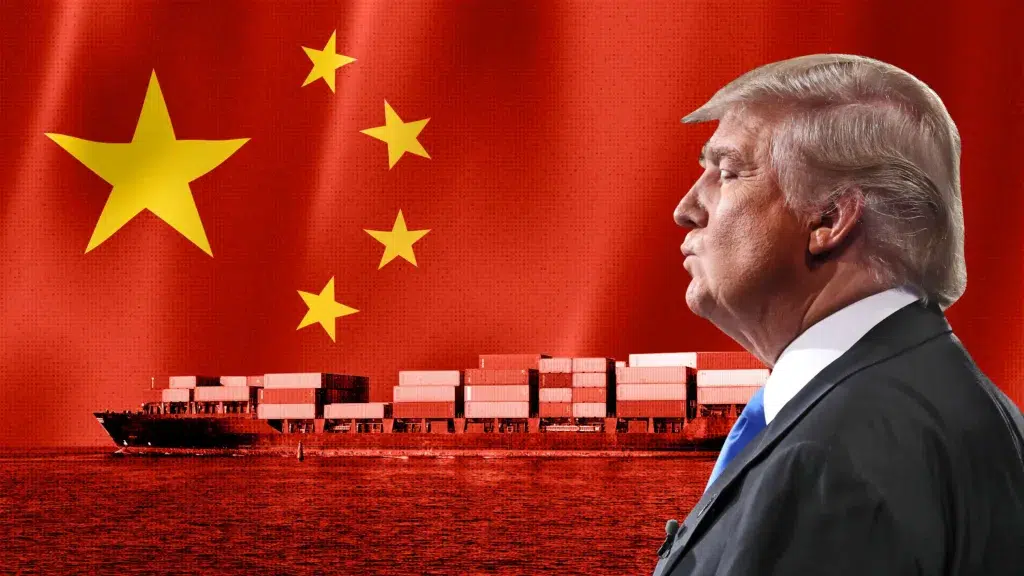US-China Trade Tensions Escalate as Beijing Stands Firm Against Trump’s Tariff Increases
The Latest Battleground in the US-China Trade War
The economic standoff between the world’s two largest economies reached new heights this week as China maintained its firm stance against President Donald Trump’s aggressive tariff policies. Despite mounting pressure from Washington, Beijing has made it clear that it won’t be intimidated by what it calls “blackmail” tactics.
China’s Defiant Response to American Tariff Hikes
Chinese officials have announced they will not back down from their 34% retaliatory tariffs on American imports, even as the Trump administration prepares to dramatically escalate its own measures. This decision comes after President Trump’s recent announcement of varying retaliatory tariffs affecting approximately 60 countries worldwide.
In response to China’s unwavering position, the White House has confirmed that tariffs on Chinese goods will surge to an unprecedented 104% beginning at 12:01 a.m. ET on Wednesday. This staggering increase follows Trump’s approval of an additional 50% tariff on Chinese imports, building upon earlier imposed rates of 20% and 34%.
Beijing’s Official Stance: “We Will Not Back Away”
China’s Ministry of Foreign Affairs pulled no punches in its assessment of the situation, accusing the Trump administration of handling the trade dispute through “intimidation, threat, and blackmail.”
In a statement shared on the social platform X on Tuesday, a ministry spokesperson delivered a resolute message: “The Chinese are not troublemakers, but we will not back away when trouble comes.”
The post continued with a direct challenge to American negotiation tactics: “Intimidation, threat and blackmail are not the right way to engage with China. We will not let anyone take away the Chinese people’s legitimate right to development.”
The Deeper Implications for Global Trade
The escalating tensions between these economic powerhouses have significant implications for global supply chains and international trade dynamics. Experts from the Peterson Institute for International Economics suggest that prolonged conflict could reshape trading patterns for decades to come.
Conditions for Potential Resolution
Chinese officials made their requirements for productive dialogue clear, stating: “The U.S. doesn’t seem to be serious about having talks right now. If the U.S. truly wants to talk, it should let people see that they’re ready to treat others with equality, respect and mutual benefit.”
The ministry’s statement concluded with what many analysts interpret as a warning: “If the U.S. decides not to care about the interests of the U.S. itself, China and the rest of the world, and is determined to fight a tariff/trade war, China’s response will continue to the end.”
Protecting National Interests Above All
Throughout this conflict, Beijing has consistently emphasized its determination to defend what it considers fundamental national priorities. The Foreign Affairs Ministry vowed that “China will not tolerate any attempt to harm the country’s sovereignty, security and development interests.”
What This Means for International Businesses
For companies with interests in either market, these developments represent significant challenges that require immediate strategic responses. International trade experts recommend diversifying supply chains and preparing contingency plans for further escalation.
As these two economic giants continue their confrontation, businesses worldwide find themselves caught in the crossfire of what increasingly appears to be a prolonged economic conflict with no immediate resolution in sight.
Take Action: Stay Informed About Evolving Trade Policies
Don’t let shifting trade policies catch your business unprepared. Subscribe to our weekly international trade bulletin for expert analysis and practical advice on navigating these turbulent economic waters.
Contact our team of international trade consultants today for a personalized assessment of how these tariff changes might impact your specific industry and business operations.



